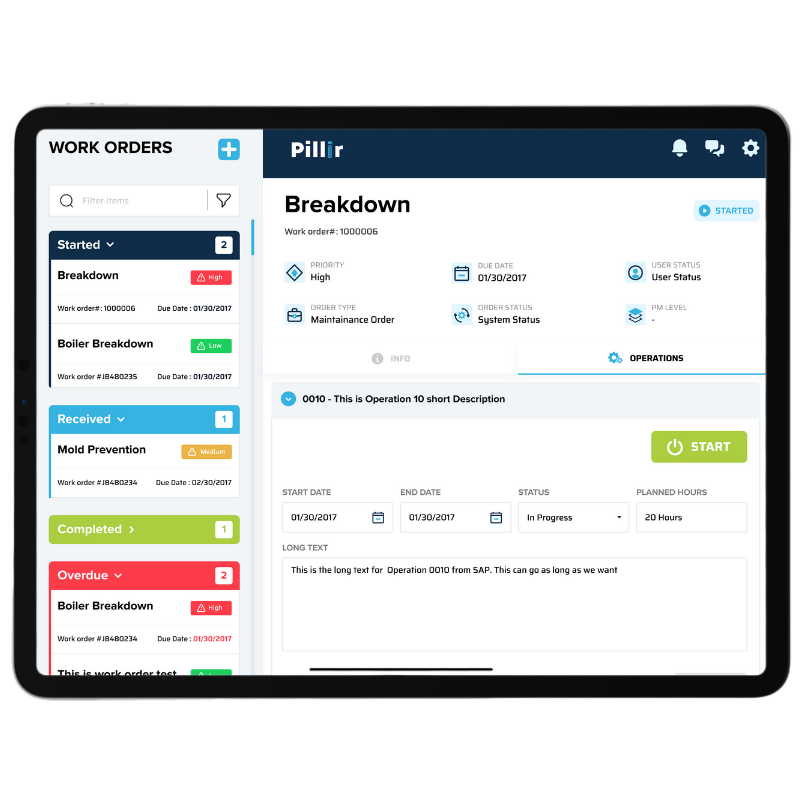Instant gratification has become the norm of what customers expect from the products they use. If they make an order, they want instant texts of shipping updates, 24/7 customer service access if anything goes wrong or they have questions, and a generally succinct and efficient customer experience. The best way for corporations to meet these expectations is through organized coordination of all internal systems.
But what happens if hardware and software in your internal systems aren’t compatible? Enter middleware.
So, what is middleware?
In this blog, we’ll define what middleware is, challenges that it introduces, and how rapid application platforms like EdgeReady Cloud work without the maintenance challenges of middleware in SAP, allowing successful modernization in ERP systems like SAP.
What Is Middleware?
Middleware is any software that connects other applications, tools, and databases together to provide a harmonized service to its customers. Middleware is commonly described as the glue that unites different devices and software platforms together. Even though the term 'Middleware' has been mentioned since 1968, it was formally introduced in the 1980s as a means of linking old legacy systems to newer applications.
Middleware performs functions ranging from the covering of a disjointed and distributed network to the creation of sameness in a heterogeneous collection of software. It offers developers an interface that allows application development, usability, and interoperability. It also provides a set of multi-purpose services that allows the application to be compatible with other internal applications or systems and also prevent system duplication.
Types of middleware applications include:
- Enterprise middleware: connects software components or enterprise applications
- Platform middleware: connects different platform architectures
Apart from the communication functions that middleware performs, the kind of middleware a corporation uses is dependent on what service they want and the kind of information they need to share. But what challenges could arise with the implementation of middleware?
How Does Middleware Weigh Down Innovation?
Even with the different types of middleware systems out there, all middleware has some features that make developing, deploying, and maintaining it a challenge. This can put a halt on innovation. Some challenges include:
Limited flexibility and slow level performance:
Middleware should be as flexible as possible and also provide high-level performance for a corporation. Most corporations want a middleware to function the same way their systems function. However, it’s often forgotten that middleware will actually limit the agility of your internal systems, as it’s just meant to unite different software platforms and devices together. This means that the middleware infrastructure must be constantly monitored, requiring someone to have complex technical knowledge.
Internet-scale application to application integration:
Facilitating internet-scale applications to application integrations is the most significant challenge of middleware. Middleware browser-web site architecture not only resembles the classic two-tier application model but also functions as such, sharing the same limitations with it.
The larger the complexity of the application, the larger the clientele becomes. and thereby This requires the creation of more powerful client hardware to support it. For this reason, the cost of satisfactory customer technology can become increasingly expensive and put a dent in the budget.
An Alternative to Middleware: EdgeReady Cloud
There are some rapid application development platforms (RAD) that require the use of middleware as a step for better SAP modernization, but the question is: Is this a resourceful and cost-effective approach to driving SAP modernization in your ERP system?
Not really.
This is mainly because middleware possesses a high level of complex configuration coupled with limited flexibility and slow level performance. Additionally, constant maintenance and general upkeep of middleware adds on to the work required of your team, taking away from productivity in other areas of the business.
Modernizing your SAP ERP system with the help of EdgeReady Cloud completely eliminates middleware challenges in SAP. EdgeReady Cloud is a low-code rapid application development platform that offers a visual interface and drag-n-drop features available in any connectivity landscape, assuring that users can be productive in any digital landscape. Additionally, EdgeReady Cloud requires little-to-no coding to create applications, making it a cost-effective and agile solution for SAP ERP users wanting to modernize their current SAP environment.
Learn more about EdgeReady Cloud to bypass maintenance challenges with middleware - click here to begin transforming your ERP system today.





 Back
Back/Logo%20-%20black%20text%20blue%20pillar%20(large)-1.jpg)

